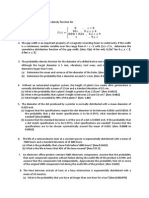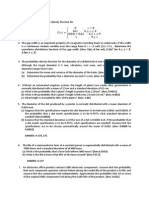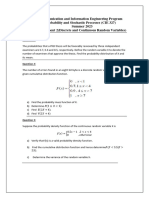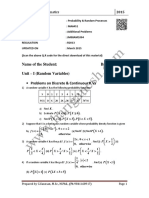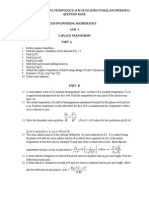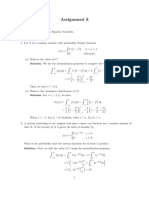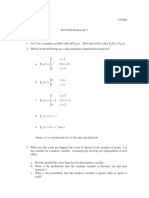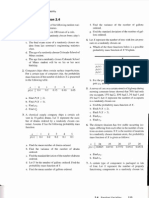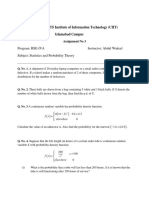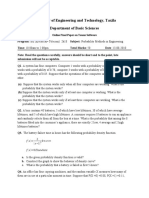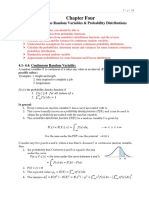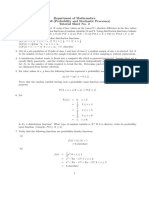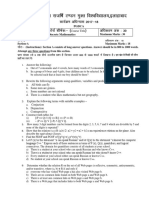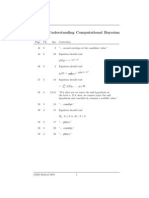0% found this document useful (0 votes)
16 views1 pageAssignment 1
The document outlines a series of assignments involving probability density functions (PDFs) for various random variables, including calculations for normalization constants, probabilities, and cumulative distribution functions. It includes specific tasks related to solar radiation, CPU time usage, and the operation of an industrial robot, requiring the application of statistical concepts to solve problems. Additionally, it references specific pages for further exercises related to the topics discussed.
Uploaded by
sanaerbh792Copyright
© © All Rights Reserved
We take content rights seriously. If you suspect this is your content, claim it here.
Available Formats
Download as DOCX, PDF, TXT or read online on Scribd
0% found this document useful (0 votes)
16 views1 pageAssignment 1
The document outlines a series of assignments involving probability density functions (PDFs) for various random variables, including calculations for normalization constants, probabilities, and cumulative distribution functions. It includes specific tasks related to solar radiation, CPU time usage, and the operation of an industrial robot, requiring the application of statistical concepts to solve problems. Additionally, it references specific pages for further exercises related to the topics discussed.
Uploaded by
sanaerbh792Copyright
© © All Rights Reserved
We take content rights seriously. If you suspect this is your content, claim it here.
Available Formats
Download as DOCX, PDF, TXT or read online on Scribd
/ 1






